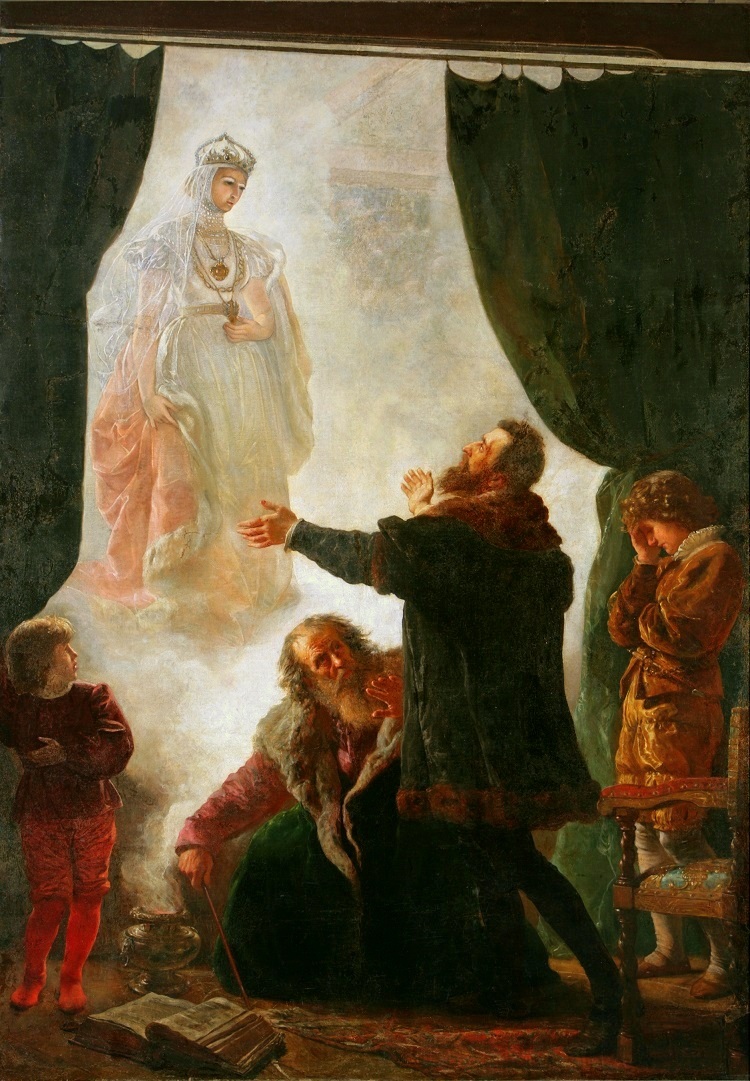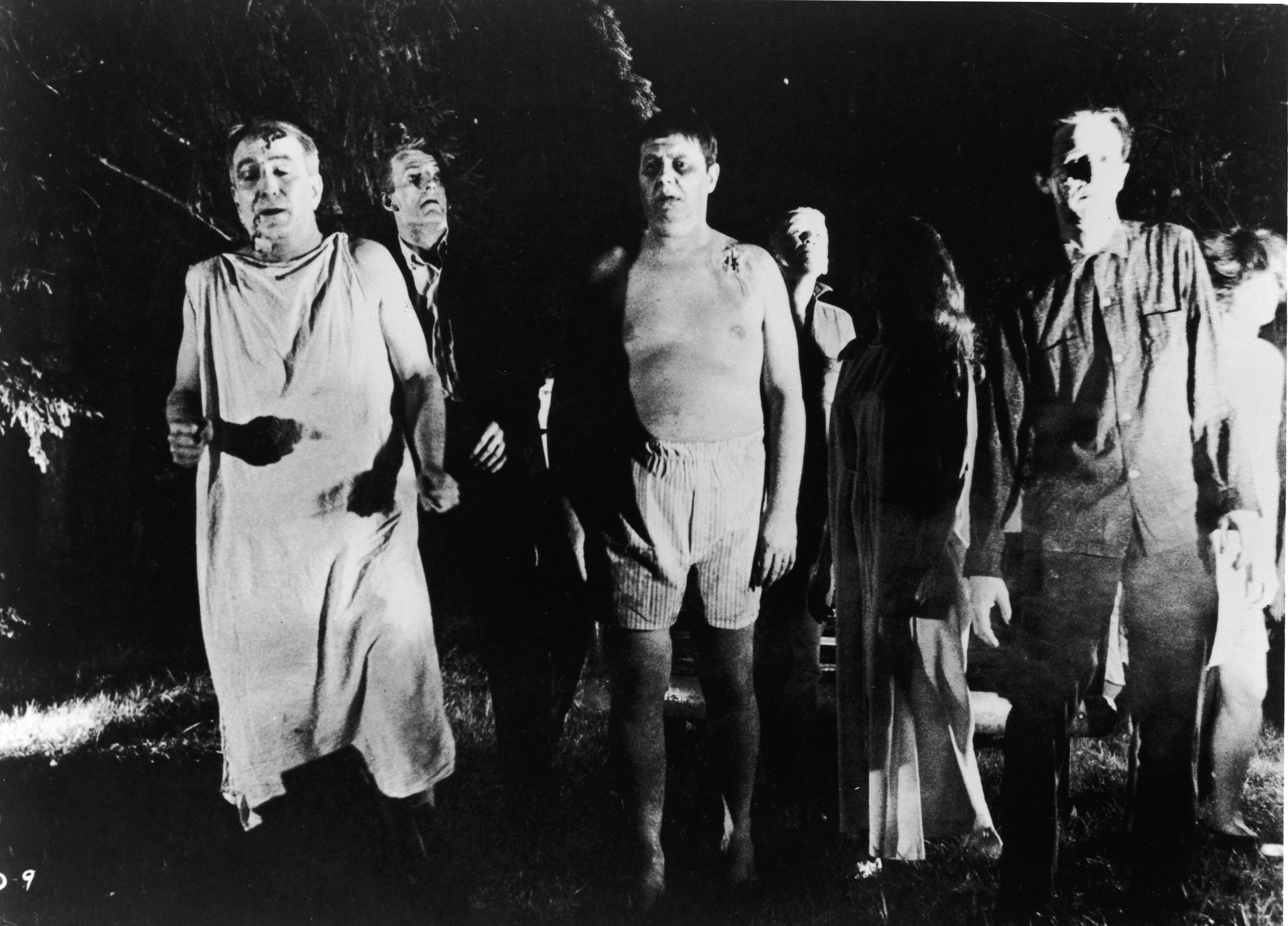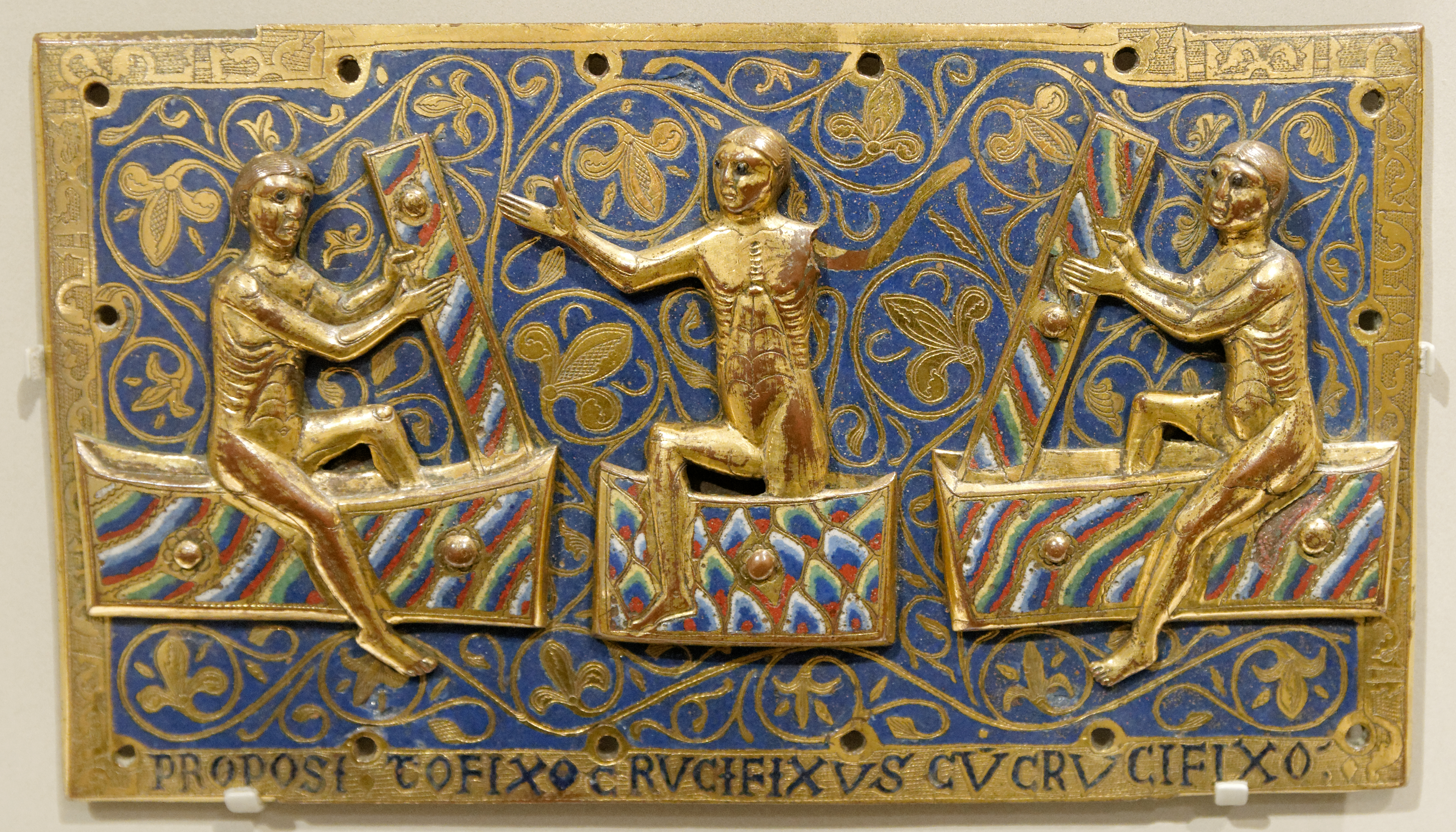|
Undead
The undead are beings in mythology, legend, or fiction that are deceased but behave as if alive. Most commonly the term refers to corporeal forms of formerly-alive humans, such as mummies, vampires, and zombies, who have been reanimated by supernatural means, technology, or disease. In some cases (for example in Dungeons & Dragons) the term also includes incorporeal forms of the dead, such as ghosts. The undead are featured in the belief systems of most cultures, and appear in many works of fantasy and horror fiction. The term is also occasionally used for real-life attempts to resurrect the dead with science and technology, from early experiments like Robert E. Cornish's to future sciences such as "chemical brain preservation" and " cryonics." History Bram Stoker considered using the title, ''The Un-Dead'', for his novel '' Dracula'' (1897), and use of the term in the novel is mostly responsible for the modern sense of the word. The word does appear in English before ... [...More Info...] [...Related Items...] OR: [Wikipedia] [Google] [Baidu] |
Zombie
A zombie ( Haitian French: , ht, zonbi) is a mythological undead corporeal revenant created through the reanimation of a corpse. Zombies are most commonly found in horror and fantasy genre works. The term comes from Haitian folklore, in which a ''zombie'' is a dead body reanimated through various methods, most commonly magic like voodoo. Modern media depictions of the reanimation of the dead often do not involve magic but rather science fictional methods such as carriers, radiation, mental diseases, vectors, pathogens, parasites, scientific accidents, etc. The English word "zombie" was first recorded in 1819, in a history of Brazil by the poet Robert Southey, in the form of "zombi"."Zombie" in |
Vampire
A vampire is a mythical creature that subsists by feeding on the Vitalism, vital essence (generally in the form of blood) of the living. In European folklore, vampires are undead, undead creatures that often visited loved ones and caused mischief or deaths in the neighbourhoods they inhabited while they were alive. They wore shrouds and were often described as bloated and of ruddy or dark countenance, markedly different from today's gaunt, pale vampire which dates from the early 19th century. Vampiric entities have been Vampire folklore by region, recorded in cultures around the world; the term ''vampire'' was popularized in Western Europe after reports of an 18th-century mass hysteria of a pre-existing folk belief in the Balkans and Eastern Europe that in some cases resulted in corpses being staked and people being accused of vampirism. Local variants in Eastern Europe were also known by different names, such as ''shtriga'' in Albanian mythology, Albania, ''vrykolakas'' in G ... [...More Info...] [...Related Items...] OR: [Wikipedia] [Google] [Baidu] |
Vampires
A vampire is a mythical creature that subsists by feeding on the vital essence (generally in the form of blood) of the living. In European folklore, vampires are undead creatures that often visited loved ones and caused mischief or deaths in the neighbourhoods they inhabited while they were alive. They wore shrouds and were often described as bloated and of ruddy or dark countenance, markedly different from today's gaunt, pale vampire which dates from the early 19th century. Vampiric entities have been recorded in cultures around the world; the term ''vampire'' was popularized in Western Europe after reports of an 18th-century mass hysteria of a pre-existing folk belief in the Balkans and Eastern Europe that in some cases resulted in corpses being staked and people being accused of vampirism. Local variants in Eastern Europe were also known by different names, such as '' shtriga'' in Albania, '' vrykolakas'' in Greece and '' strigoi'' in Romania. In modern times, the ... [...More Info...] [...Related Items...] OR: [Wikipedia] [Google] [Baidu] |
Nosferatu (word)
The name "Nosferatu" has been presented as an archaic Romanian word, synonymous with "vampire". However, it was largely popularized in the late 19th and early 20th centuries by Western fiction such as ''Dracula'' (1897), and the film ''Nosferatu'' (1922). One of the suggested etymologies of the term is that it is derived from the Romanian ''Nesuferit'' ("offensive" or "troublesome"). Origins of the word The etymology of the word ''nosferatu'' is undetermined. There is no doubt that it achieved currency through Bram Stoker's 1897 novel ''Dracula'' and its unauthorised cinematic adaptation, ''Nosferatu'' (1922). Stoker identified his source for the term as 19th-century British author and speaker Emily Gerard. It is commonly thought that Gerard introduced the word into print in an 1885 magazine article, "Transylvanian Superstitions", and in her travelogue ''The Land Beyond the Forest'' ("Transylvania" is Latin for "beyond the forest", literally "across/through the forest"). She mere ... [...More Info...] [...Related Items...] OR: [Wikipedia] [Google] [Baidu] |
Dracula
''Dracula'' is a novel by Bram Stoker, published in 1897. As an epistolary novel, the narrative is related through letters, diary entries, and newspaper articles. It has no single protagonist, but opens with solicitor Jonathan Harker taking a business trip to stay at the castle of a Transylvanian nobleman, Count Dracula. Harker escapes the castle after discovering that Dracula is a vampire, and the Count moves to England and plagues the seaside town of Whitby. A small group, led by Abraham Van Helsing, hunt Dracula and, in the end, kill him. ''Dracula'' was mostly written in the 1890s. Stoker produced over a hundred pages of notes for the novel, drawing extensively from Transylvanian folklore and history. Some scholars have suggested that the character of Dracula was inspired by historical figures like the Wallachian prince Vlad the Impaler or the countess Elizabeth Báthory, but there is widespread disagreement. Stoker's notes mention neither figure. He found the n ... [...More Info...] [...Related Items...] OR: [Wikipedia] [Google] [Baidu] |
Mummy (undead)
Mummies are commonly featured in horror genres as undead creatures wrapped in bandages. Similar undead include skeletons and zombies. History The mummy genre has its origins in the 19th century when Egypt was being colonized by France and, subsequently, by Victorian Britain. The first living mummies in fiction were mostly female, and they were presented in a romantic and sexual light, often as love interests for the protagonist; this metaphorically represented the sexualized Orientalism and the colonial romanticization of the East. Notable examples of this trend include ''The Mummy's Foot'' by Théophile Gautier, '' The Jewel of Seven Stars'' by Bram Stoker, ''The Ring of Thoth'' by Arthur Conan Doyle, '' She: A History of Adventure'' and '' Smith and the Pharaohs'' by H. Rider Haggard, ''My New Year's Eve Among the Mummies'' by Grant Allen, ''The Unseen Man's Story'' by Julian Hawthorne, and ''Iras: A Mystery'' by H. D. Everett; the latter actually has the protagonist marry a ... [...More Info...] [...Related Items...] OR: [Wikipedia] [Google] [Baidu] |
Resident Evil (film)
''Resident Evil'' is a 2002 action horror film written and directed by Paul W. S. Anderson. The film stars Milla Jovovich, Michelle Rodriguez, Eric Mabius, James Purefoy, Martin Crewes, and Colin Salmon. It is the first installment in the ''Resident Evil'' film series, which is loosely based on the video game series of the same name. Borrowing elements from the video games ''Resident Evil'' and ''Resident Evil 2'', the film follows amnesiac heroine Alice and a band of Umbrella Corporation commandos as they attempt to contain the outbreak of the T-virus at a secret underground facility. German studio Constantin Film bought the rights to adapt the series in January 1997. Several writers and filmmakers, such as Alan B. McElroy, George A. Romero and Jamie Blanks, were initially hired to direct and write the film, but their scripts were rejected. In 2000, Paul W. S. Anderson was announced as writer and director. Developed as a prequel set in the same continuity as the video g ... [...More Info...] [...Related Items...] OR: [Wikipedia] [Google] [Baidu] |
Resurrection
Resurrection or anastasis is the concept of coming back to life after death. In a number of religions, a dying-and-rising god is a deity which dies and is resurrected. Reincarnation is a similar process hypothesized by other religions, which involves the same person or deity coming back to live in a different body, rather than the same one. The resurrection of the dead is a standard eschatological belief in the Abrahamic religions. As a religious concept, it is used in two distinct respects: a belief in the resurrection of individual souls that is current and ongoing ( Christian idealism, realized eschatology), or else a belief in a singular resurrection of the dead at the end of the world. Some believe the soul is the actual vehicle by which people are resurrected. The death and resurrection of Jesus is a central focus of Christianity. Christian theological debate ensues with regard to what kind of resurrection is factual – either a ''spiritual'' resurrection ... [...More Info...] [...Related Items...] OR: [Wikipedia] [Google] [Baidu] |
Frankenstein
''Frankenstein; or, The Modern Prometheus'' is an 1818 novel written by English author Mary Shelley. ''Frankenstein'' tells the story of Victor Frankenstein, a young scientist who creates a sapient creature in an unorthodox scientific experiment. Shelley started writing the story when she was 18, and the first edition was published anonymously in London on 1 January 1818, when she was 20. Her name first appeared in the second edition, which was published in Paris in 1821. Shelley travelled through Europe in 1815, moving along the river Rhine in Germany, and stopping in Gernsheim, away from Frankenstein Castle, where, two centuries before, an alchemist had engaged in experiments.This seems to mean Johann Konrad Dippel (1673–1734), one century before (not two). For Dippel's experiments and the possibility of connection to ''Frankenstein'' see the Dippel article. She then journeyed to the region of Geneva, Switzerland, where much of the story takes place. Galvanism ... [...More Info...] [...Related Items...] OR: [Wikipedia] [Google] [Baidu] |
I Am Legend (novel)
''I Am Legend'' is a 1954 post-apocalyptic horror novel by American writer Richard Matheson that was influential in the modern development of zombie and vampire literature and in popularizing the concept of a worldwide apocalypse due to disease. The novel was a success and was adapted into the films '' The Last Man on Earth'' (1964), '' The Omega Man'' (1971), and '' I Am Legend'' (2007). It was also an inspiration for George A. Romero's ''Night of the Living Dead'' (1968). Plot Implicitly set on Cimarron Street in 1976 Los Angeles after an apocalyptic war that ravages the land with weekly dust storms, the novel details the life of Robert Neville in the months and eventually years after the outbreak of a pandemic that has killed the rest of the human population and turned infected survivors into "vampires". The vampires conform remarkably to their stereotypes in fiction and folklore: they are blood-sucking, pale-skinned, and nocturnal, though otherwise indistinguishable from n ... [...More Info...] [...Related Items...] OR: [Wikipedia] [Google] [Baidu] |
The Return Of The Living Dead
''The Return of the Living Dead'' is a 1985 American comedy horror film written and directed by Dan O'Bannon in his directorial debut, and starring Clu Gulager, James Karen, Thom Matthews and Don Calfa. The film tells the story of how a warehouse owner, accompanied by his two employees, mortician friend and a group of teenage punks, deal with the accidental release of a horde of unkillable, brain-hungry zombies onto an unsuspecting town. The film, described as a "mordant punk comedy," is known for introducing multiple popular concepts to the zombie genre: zombies eating specifically brains, as opposed to eating any form of human flesh; zombies being invulnerable to a gunshot to the head; zombies being capable of at least some level of thought; and zombies running at full speed rather than being shambling hulks. The movie's soundtrack was noteworthy, as it featured several Los Angeles-based deathrock and punk rock bands of the era. The film was a critical success and performed ... [...More Info...] [...Related Items...] OR: [Wikipedia] [Google] [Baidu] |
Wojciech Gerson - Zjawa Barbary Radziwiłłówny
Wojciech () is a Polish name, equivalent to Czech Vojtěch , Slovak Vojtech, and German Woitke. The name is formed from two components in archaic Polish: * ''wój'' (Slavic: ''voj''), a root pertaining to war. It also forms words like ''wojownik'' ("warrior") and ''wojna'' ("war"). * ''ciech'' (from an earlier form, ''tech''), meaning "joy". The resulting combination means "he who enjoys war" or "joyous warrior". Its Polish diminutive forms include ''Wojtek'' , ''Wojtuś'' , ''Wojtas'', ''Wojcio'', ''Wojteczek'', ''Wojcieszek'', ''Wojtaszka'', ''Wojtaszek'', ''Wojan'' (noted already in 1136), ''Wojko'', and variants noted as early as 1400, including ''Woytko'', ''Woythko'', and ''Voytko''. The feminine form is Wojciecha (). Related names in South Slavic languages include ''Vojko'', ''Vojislav'', and ''Vojteh''. The name has been rendered into German in several different variations, including: ''Woitke'', ''Witke'', ''Voitke'', ''Voytke'', ''Woytke'', ''Vogtke'', ''Woytegk'', '' ... [...More Info...] [...Related Items...] OR: [Wikipedia] [Google] [Baidu] |



_-_Google_Art_Project.jpg)



_Irish_Frankenstein_(cropped).jpg)